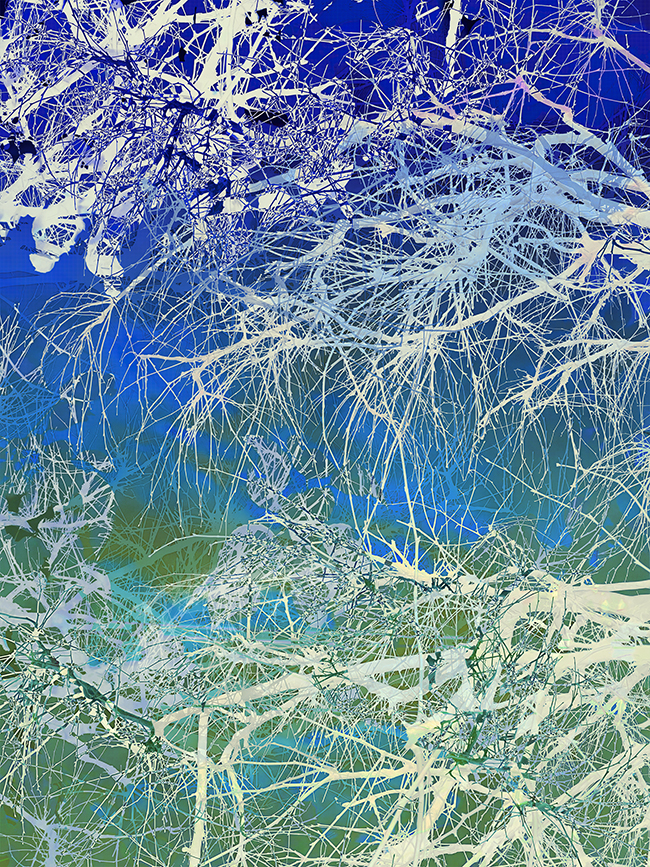Matthew Swarts, a visionary in the realm of photography and digital imaging, has an intriguing approach to his art. “I use computers to question some of the things I make with cameras,” he states, challenging traditional notions of photography. Swarts believes in photography’s power to touch truth but is skeptical of its supposed direct link to reality. His work, showcased in publications like The New York Times Magazine, WIRED, and SLATE, questions our perception of reality through digital manipulation. With a background in Ethics and the Philosophy of Value from Princeton University and an MFA in Photography and Digital Imaging from the Massachusetts College of Art and Design, Swarts has also contributed to academia as a faculty member at numerous institutions. Living and working in Somerville, Massachusetts, he continues to push the boundaries of photographic art, earning accolades like the J.William Fulbright Scholar Grant and the Ruttenberg Arts Foundation Award.

Matthew Swarts’ recent project, BRANCHES, is a fascinating blend of nature and technology. Conducted in the urban setting of Cambridge and Somerville, Massachusetts, from 2021 to 2024, BRANCHES is an inquiry into the lives of trees within a densely populated urban environment. Inspired by a quote from Aesop, “When the woodcutter enters the forest, the trees all murmur, the handle of the axe is one of us,” Swarts’ work reflects a deep contemplation of nature’s resilience and interconnectedness.
Swarts began this project during the pandemic, finding solace in daily walks and the simple act of looking up at the trees. These walks became a meditative practice, a way to reconnect with nature amidst the concrete and chaos of city life. Each morning, he collected visual data using various camera devices, capturing the intricate details of tree branches against the urban skyline.
The essence of BRANCHES lies in its composite nature. Swarts meticulously assembles each image in Photoshop from multiple parts, creating a cohesive yet fragmented representation of the urban forest. These composites, with variable dimensions up to 40 inches in width, offer a reimagined view of trees, blending the organic with the digital. In an urban environment where it’s challenging to feel the true expanse of a forest, BRANCHES serves as Swarts’ way of reweaving an imaginary canopy.
The project underscores the difficulty of experiencing nature’s vastness within a city. Yet, through his composites, Swarts creates a visual expanse that invites viewers to immerse themselves in an imagined forest. This blend of reality and imagination challenges our perceptions, encouraging us to see beyond the physical limitations of our surroundings.
Swarts’ artistic approach is deeply philosophical. His belief that photography can touch on truth but is not necessarily bound to represent reality is evident in BRANCHES. By using digital tools to manipulate and recompose images, he questions the very nature of photographic truth. This method allows him to explore the relationship between reality and representation, pushing the boundaries of what photography can convey.
His work is a testament to the evolving nature of art in the digital age. It highlights how technology can transform our understanding of traditional mediums, offering new ways to engage with and interpret the world around us. BRANCHES is not just a series of photographs; it’s a digital tapestry that weaves together the threads of reality and imagination.
A Journey of Innovation and Exploration
Matthew Swarts’ contributions to photography and digital imaging extend beyond his artistic creations. His extensive academic career has seen him impart knowledge and inspire students at esteemed institutions such as Amherst College, Bowdoin College, and The University of Connecticut. His achievements, including the J.William Fulbright Scholar Grant and the Ruttenberg Arts Foundation Award, underscore his influence and innovation in the field of photographic portraiture.
Living in Somerville, Swarts continues to explore and experiment, using his unique perspective to create art that resonates on both an intellectual and emotional level. BRANCHES exemplifies his commitment to questioning and expanding the boundaries of photography, offering a poignant reflection on the interplay between nature, technology, and human perception.
In a world where the lines between the digital and the real are increasingly blurred, Matthew Swarts’ work serves as a compelling reminder of the power of art to challenge, inspire, and transform. His journey through the branches of both trees and technology invites us to look beyond the surface, to see the interconnectedness of all things, and to find beauty in the unexpected intersections of nature and digital creation.

